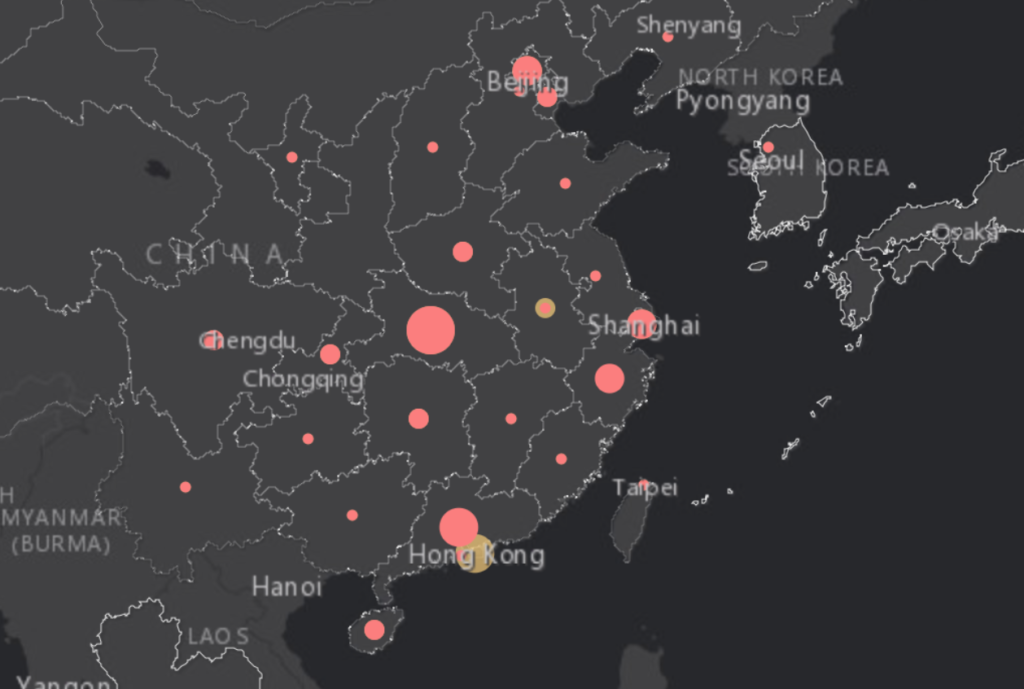
Information
Coronavirus crisis: It's time for India Inc to create opportunities
While India may start seeing disruption in the next few weeks, the crisis could also seed opportunities.
Scientists around the world are still making sense of the outbreak of the novel coronavirus in China. While there are still a large number of unknowns, and a race for a cure is on, multiple experts have said it is likely that the outbreak could turn into a global pandemic (the World Health Organisation has not classified the outbreak as a pandemic)
Harvard epidemiologist Marc Lipsitch has estimated the virus could infect 40-70% of the global population (while this might technically be true, what really matters is how many of those infected will show symptoms and, at the moment, nobody is able to say for sure). Gabriel Leung, chair of public health medicine at Hong Kong University, told The Guardian on February 12 that the virus could infect 60% of the global population.
With a fatality rate between 1% and 2%, the world could be staring at an alarming situation unless the spread is contained.
As of Saturday, 66,492 cases were reported in China. The number of deaths stand at 1,523. The disruption in business is beginning to be felt globally.
According to analytics firm Dun & Bradstreet, at least 51,000, including 163 Fortune 1,000 companies around the world, have one or more direct (or tier-1) suppliers in the impacted region (China’s Hubei province) and at least five million companies have one or more tier-2 suppliers in and around the epicentre of the outbreak.
An uneasy calm is prevailing across businesses in India even as realization dawns that the outbreak has the potential to derail bilateral trade worth $87 billion — China exports $70 billion worth of goods to India. Exports from India include organic chemicals, cotton, ores, plastic items, salts and so on. Imports range from electrical machinery, nuclear machinery, optical and medical instruments, vehicles and accessories to iron and steel. China is India’s second largest trading partner. The country accounted for 13.7% of India’s total imports in 2018-19 while 5.1% of India’s total exports went there, according to ministry of commerce data.
China dependency
India’s reliance on China is spread across sectors.
Indian pharma industry is dependent on Chinese imports to make medicines — the APIs (active pharma ingredients) come from China. The $30 billion domestic smartphone market, world’s second largest now, will see major disruptions as it is heavily dependent on imports.
India has an abundance of sunlight throughout the year but can’t convert it into grid electricity without Chinese gear. Solar power parks are dependent on Chinese imports. A whopping 80% of solar cells and modules, which absorb sunlight to generate electricity, used in India are imported from China-based manufacturers, including Trina Solar, Jinko Solar and China Solar. Over the past 8-10 years, cheap Chinese imports made Indian solar panel makers uncompetitive and several local players had to shut shop.
Apart from these, a whole lot of sectors such as toys, furniture, computers, cars and white goods are dependent on China. A supply crunch in smartphones, TVs and electronics will impact ecommerce sales dearly. These items comprise about half of the gross merchandise value of $31 billion e-commerce sales. Some 40% of the 160 million smartphones sold annually are sold online.
The viral outbreak comes at a difficult time for the Indian economy and could make the slowdown worse. Coronavirus could further slow down the already struggling economy. While S&P has estimated the crisis would slow China’s GDP growth this year to 5%, no formal estimates of the impact on India are available. A supply shortage of components that go into the manufacturing of a wide range of goods will likely be the first manifestation of the disruption. This could translate into shortages of finished products, higher prices, assembly lines shutting down, end of online discounts and job losses.
“There’s some breathing time as manufacturing units had stocked up for the Chinese bi-annual holiday (the Chinese New Year). But that will give a buffer of just three-six weeks,” says George Paul, CEO, Manufacturers Association for Information Technology (MAIT). As a routine, Indian companies stock up inventories in September-December every year ahead of the Chinese New Year in February and hence there’s no immediate panic. Tepid consumption growth in India has made things easier.
World’s factory
The coming days will see some stress if factory closures continue in China. Wuhan, the epicentre of the crisis, is home to some of the world’s largest computer factories. Hubei province, whose capital is Wuhan, is home to some of the world’s largest auto component makers. China is the world’s factory — it makes around 90% of the world’s 300 million computers a year, 70% of the 2 billion phones and 80% of the 110 million air conditioners sold globally.
On the telecom network side, 25% imports are from China. Rajan S Mathews, director general, COAI (Cellular Operators Association of India), says: “The handset makers will be impacted more as almost 80% of the components come from China.” India sources network gear, including antennas, microwave equipment, routers and base stations, from Nokia, Ericsson, Cisco and Indian maker Tejas, besides Chinese companies. For
Reliance Jio, South Korea’s Samsung is the main supplier.
In smartphones, “70% of the bill of materials is accounted for by imports from China,” says Shashin Devsare, executive director, Karbonn Mobiles. India is dependent on chipsets, displays and batteries from China.
MOST VIEWED ARTICLES
LATEST ARTICLES
EPrompto Security Services
13 Feb, 2021
Which Technologies are best for you
13 Feb, 2021